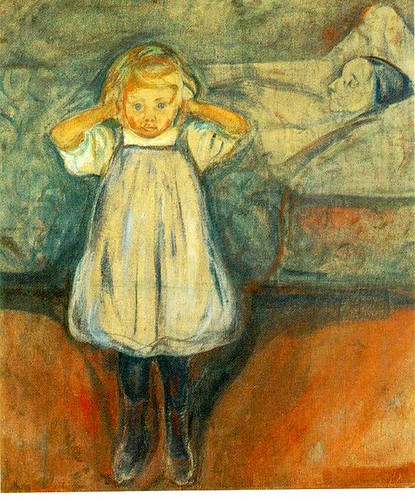
Think of a bowl of rich, creamy chocolate ice cream topped with a heavenly cloud of sweet, homemade, whipped cream. Now, picture a slab of rock-hard, fat-free, imitation-flavored chocolate frozen yogurt with artificial coloring and no sugar added topped with fat-free Reddi-wip. That about sums up the difference between the real Edie Sedgwick and the biopic-cum-parody that is Factory Girl.
Thankfully, I went into it with no expectations. Those kinds of films almost never live up to the hype when the hype is good, and when you're portraying iconic figures, you're practically looking to fail. In this case, the reviews were mixed, though mostly negative, so my only hope was that maybe I'd be pleasantly surprised. I wasn't.
I rarely get a chance--or have the patience--to watch a movie anymore, but I've been sick and wasn't up to writing. I had some time to myself today, and I didn't feel like reading, so I figured, what the hell, so what if I'm two years late? At least I'll get to see some cool Edie clothes. And that was the only good thing I saw. My instincts told me that this was a film I should watch alone, because the only thing as bad as being embarrassed in front of someone else is being embarrassed for someone else in front of someone else, and I just knew that with portrayals of larger-than-life icons like Edie, Warhol, and Dylan in the hands of anyone but world-class actors, I would be cringing. And even though I watched it by myself--I was still cringing. Especially at the Dylan--I mean, "Quinn"--character, over-acted by Hayden Christensen. All I can say is, no wonder Dylan threatened to sue!

Guy Pearce's Warhol was more of an impersonation--almost a parody--than a portrayal, though Sienna Miller did an acceptable job with the flimsy, contrived script she had to work with and the pathetic supporting actor (Jimmy Fallon!) she was paired with. She's pretty and waif-like and-- when made-up with heavy eyeliner and false lashes and decked out in Edie's signature chandeliers, micro-minis, tights, and mid-60s New York society pre-hippie mod--could have passed for Edie. But she lacked the spirit, the spunk, the hipness, and the charisma that transcends mere "prettiness"--it was the je nais sais quoi that made Edie Sedgwick the underground "it girl" of the mid-60s, and the reason a dramatization by someone who wasn't even born when Sedgwick died probably should not have been attempted.
Thankfully, I went into it with no expectations. Those kinds of films almost never live up to the hype when the hype is good, and when you're portraying iconic figures, you're practically looking to fail. In this case, the reviews were mixed, though mostly negative, so my only hope was that maybe I'd be pleasantly surprised. I wasn't.
I rarely get a chance--or have the patience--to watch a movie anymore, but I've been sick and wasn't up to writing. I had some time to myself today, and I didn't feel like reading, so I figured, what the hell, so what if I'm two years late? At least I'll get to see some cool Edie clothes. And that was the only good thing I saw. My instincts told me that this was a film I should watch alone, because the only thing as bad as being embarrassed in front of someone else is being embarrassed for someone else in front of someone else, and I just knew that with portrayals of larger-than-life icons like Edie, Warhol, and Dylan in the hands of anyone but world-class actors, I would be cringing. And even though I watched it by myself--I was still cringing. Especially at the Dylan--I mean, "Quinn"--character, over-acted by Hayden Christensen. All I can say is, no wonder Dylan threatened to sue!

Guy Pearce's Warhol was more of an impersonation--almost a parody--than a portrayal, though Sienna Miller did an acceptable job with the flimsy, contrived script she had to work with and the pathetic supporting actor (Jimmy Fallon!) she was paired with. She's pretty and waif-like and-- when made-up with heavy eyeliner and false lashes and decked out in Edie's signature chandeliers, micro-minis, tights, and mid-60s New York society pre-hippie mod--could have passed for Edie. But she lacked the spirit, the spunk, the hipness, and the charisma that transcends mere "prettiness"--it was the je nais sais quoi that made Edie Sedgwick the underground "it girl" of the mid-60s, and the reason a dramatization by someone who wasn't even born when Sedgwick died probably should not have been attempted.
Anyway, no real analysis is needed. Save your money and, even if you can watch it for free, save your time. You can see the real Edie on YouTube, read about her in George Plimpton and Jean Stein's wonderful "oral" bio, and find shelves full of books with gorgeous photos and interesting perspectives. Don't try to live it--or re-live it--through this movie. You can't go home again and your imagination is likely much richer than this poor little film.



























